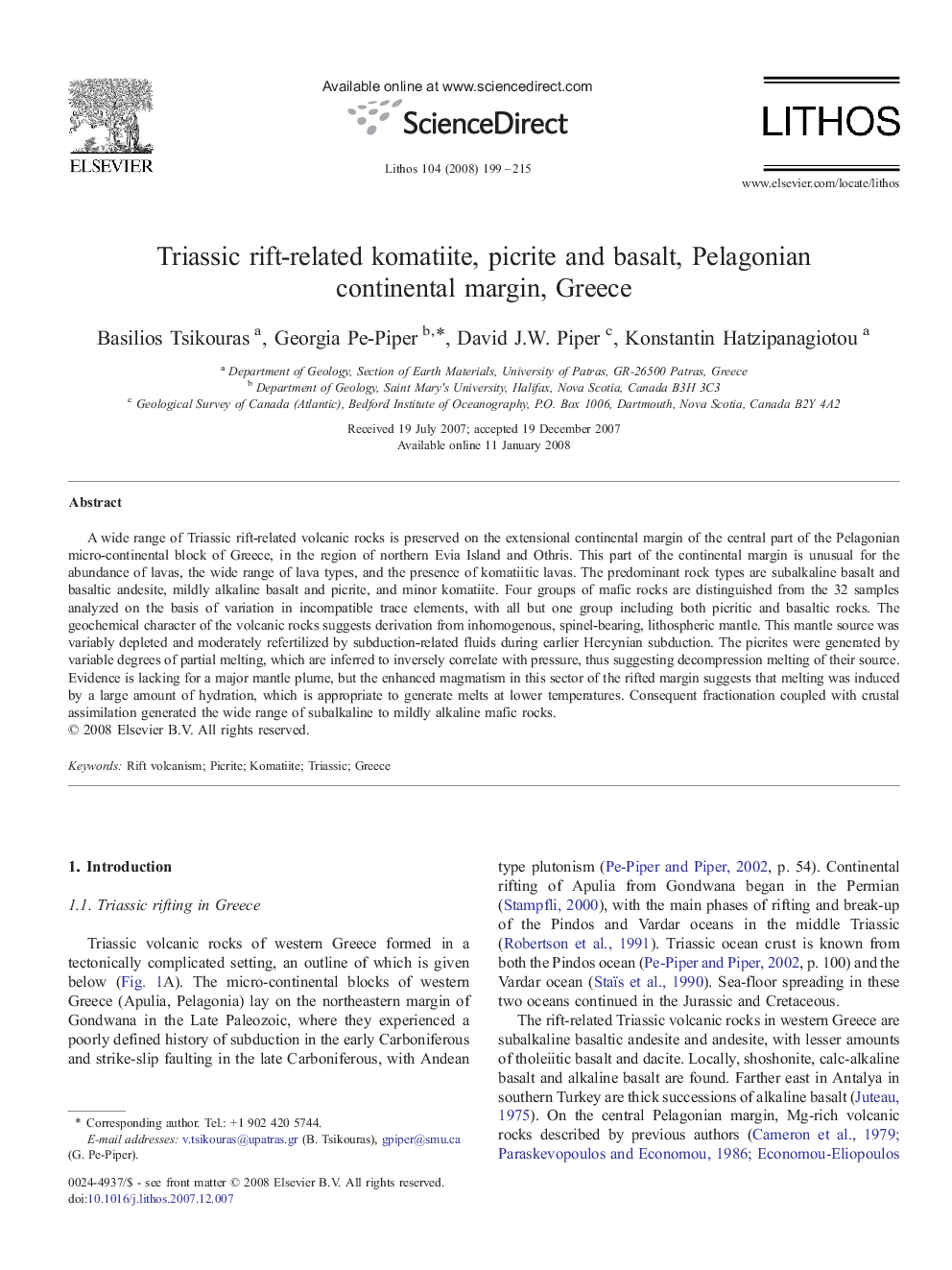| Article ID | Journal | Published Year | Pages | File Type |
|---|---|---|---|---|
| 4717609 | Lithos | 2008 | 17 Pages |
A wide range of Triassic rift-related volcanic rocks is preserved on the extensional continental margin of the central part of the Pelagonian micro-continental block of Greece, in the region of northern Evia Island and Othris. This part of the continental margin is unusual for the abundance of lavas, the wide range of lava types, and the presence of komatiitic lavas. The predominant rock types are subalkaline basalt and basaltic andesite, mildly alkaline basalt and picrite, and minor komatiite. Four groups of mafic rocks are distinguished from the 32 samples analyzed on the basis of variation in incompatible trace elements, with all but one group including both picritic and basaltic rocks. The geochemical character of the volcanic rocks suggests derivation from inhomogenous, spinel-bearing, lithospheric mantle. This mantle source was variably depleted and moderately refertilized by subduction-related fluids during earlier Hercynian subduction. The picrites were generated by variable degrees of partial melting, which are inferred to inversely correlate with pressure, thus suggesting decompression melting of their source. Evidence is lacking for a major mantle plume, but the enhanced magmatism in this sector of the rifted margin suggests that melting was induced by a large amount of hydration, which is appropriate to generate melts at lower temperatures. Consequent fractionation coupled with crustal assimilation generated the wide range of subalkaline to mildly alkaline mafic rocks.
